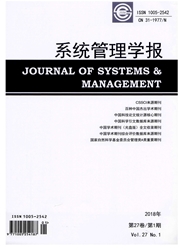

 中文摘要:
中文摘要:
选取1955~2010年中国能源消费和人均GDP数据,建立了基于三次方关系的中国能源消费与人均GDP的EKC模型,通过计算、比较发现:线性回归系数和二次回归系数均不显著,能源消费总量、人均能源消费与人均GDP之间存在“N”型EKC曲线,且不存在拐点;能源强度与人均GDP之间存在“N”型EKC曲线,但存在拐点。能源消费的因素分解和熵权评价法表明:人均GDP增加是能源消费增加的驱动力,能源强度的降低能抑制能源消费的增加;能源强度的扩展模型和最佳子集回归表明:对能源强度影响最大的是工业能源强度,其次是工业结构,然后是第三产业能源强度。
 英文摘要:
英文摘要:
Using the time series data ranging from 1955 to 2010 that covers China's energy consumption and GDP per capital, we construct an EKC model of China's energy consumption and GDP per capital assuming the cubic relationship. Through calculation and comparison, we found that linear regression coefficients and quadratic regression coefficients were not significant. The simulation results show that there exist: an N-type EKC curve without any critical points between the total energy consumption, energy consumption per capita and GDP per capita; while there is an N-type EKC curve with critical points between the energy intensity and GDP per capita. The increase of per capita GDP is the main driving factor of energy consumption, and the decrease of energy intensity is the main inhibitors of energy consumption. Energy intensity extension model and optimum subset regression show that the main factor affecting energy intensity is industrial energy intensity, followed by the industrial structure and energy intensity of the tertiary industry in sequential order.
 同期刊论文项目
同期刊论文项目
 同项目期刊论文
同项目期刊论文
 期刊信息
期刊信息
